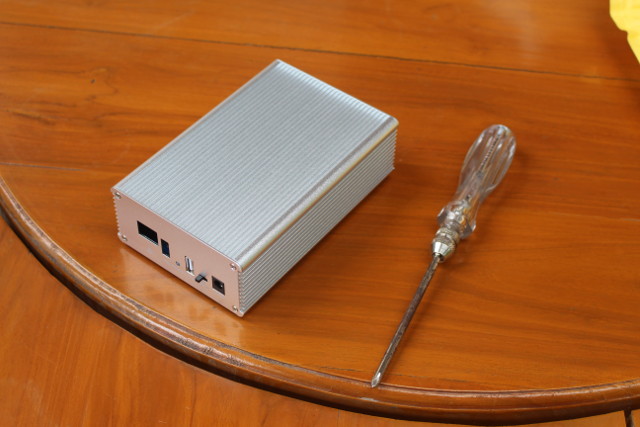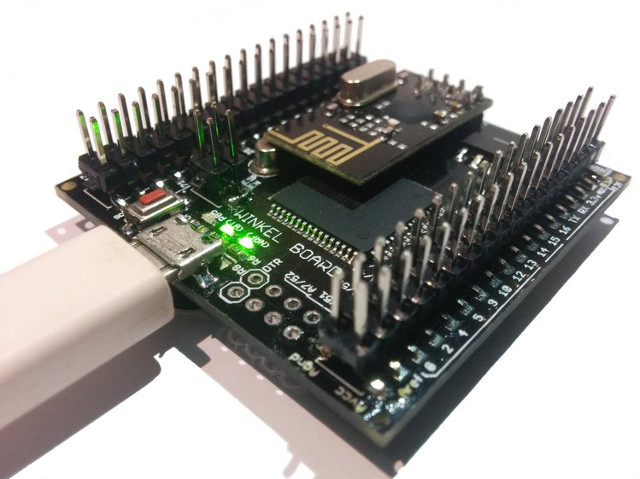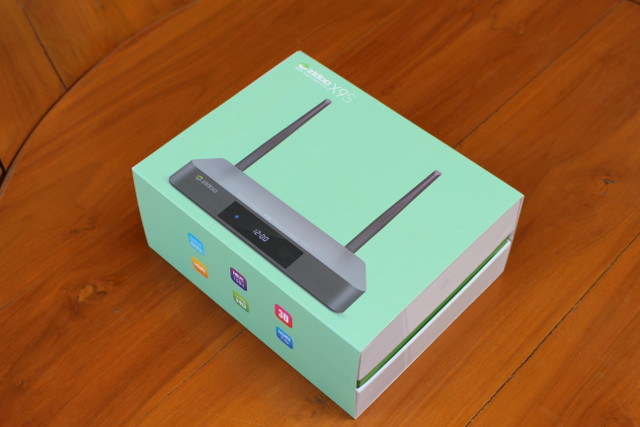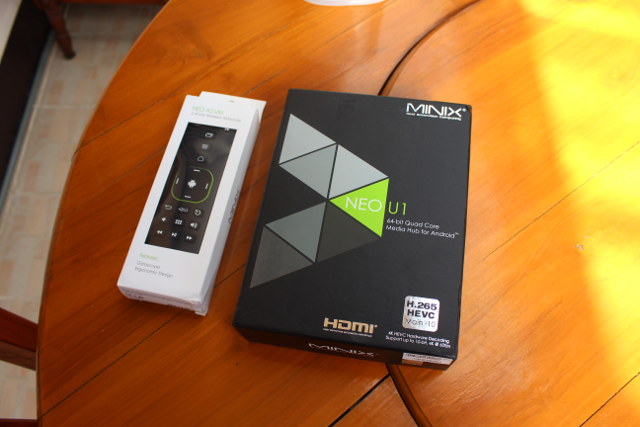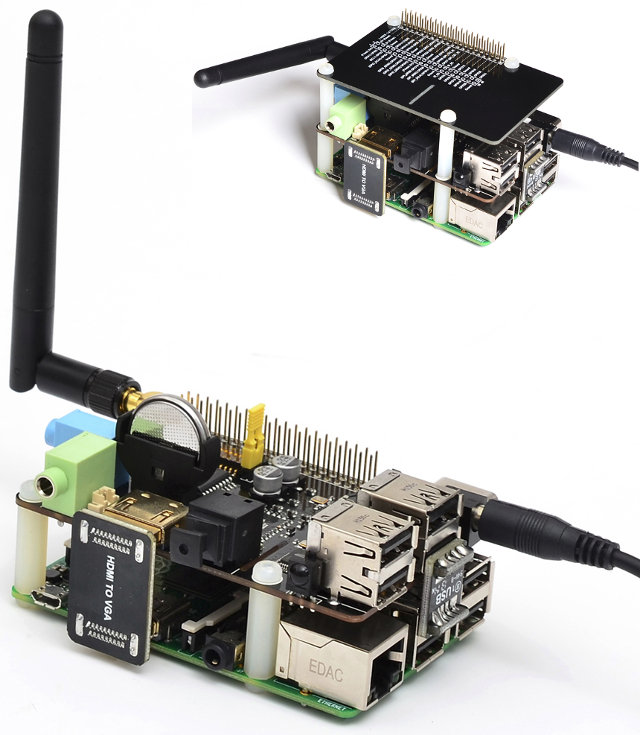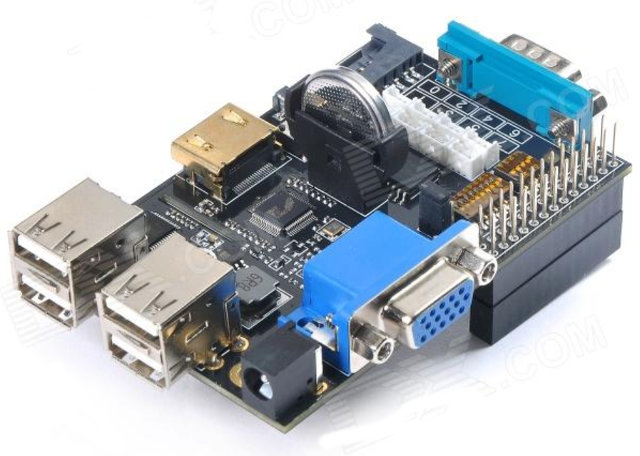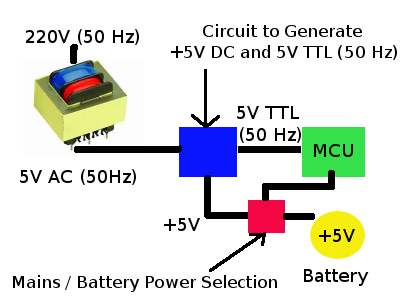NAS Dock v1.2 for Nano Pi NEO / NEO 2 is, as the name implies, a complete mini NAS kit for 2.5″ drive for NanoPi NEO or NEO 2 board. The NEO 2 board is strongly recommended, since it’s not much more expensive, but should deliver much better results due to its Gigabit Ethernet interface. I’ve received two of those kits together with several other boards & accessories from FriendlyELEC, and today I’ll show how to assemble the kit, configure OpenMediaVault, and run some benchmarks. NAS Kit V1.2 Assembly with NanoPi NEO 2 Board The only extra tool you’ll need is a screwdriver, and potentially a soldering iron as we’ll see further below. The metal box is stuff wih accessories so the first thing is to open one or two sides to take out the content. We have the mainboard, NanoPi NEO back plate, NanoPi NEO 2 back plater, a […]
$24 Winkel Arduino Compatible Board Includes WiFi, Bluetooth, 2.4 GHz RF, and an RTC (Crowdfunding)
There are plenty of Arduino compatible boards with WiFi based on ESP8266 WiSoC going for around $5 to $10, and with ESP32 processor, we are starting to have $15 to $20 boards with both WiFi and Bluetooth, but while ESP-IDF SDK has been progressing nicely, some parts of Bluetooth functionality are still not implemented. Winkel board offers an interesting alternative by offering WiFi, Bluetooth, 2.4GHz ISM, and an RTC for $24. Winkel board specifications: MCU – Microchip/Atmel ATmega128 MCU @ 16 MHz with 128KB flash memory, 4KB SRAM, 4KB EEPROM Connectivity WiFi 802.11 b/g/n via ESP12E module based on ESP8266 Bluetooth 2.0 + EDR via HC-05 module RF Radio – NRF24l01 2.4 GHz ISM radio. (Note: It might be possible to use it for Bluetooth LE connection, see here and there). I/Os (through both Atmel MCU and ESP8266) 38x Digital I/Os 7x PWM Digital I/Os 8x Analog Inputs USB – […]
Zidoo X9S (Realtek RTD1295) Android TV Box Review – Part 1: Unboxing and Teardown
Zidoo X9S is one of the first Realtek RTD1295 based TV boxes coming to market, and it has some pretty special features like running both Android 6.0 and OpenWrt simultaneously, HDMI input support for video recording and PiP, an external SATA interface, 4K media capabilities including HDMI 2.0a output, 4K 60 fps H.265 and VP9 & 4K 24 Hz H.264 video decoding, as well as HDR and 3D support. You can find the full Zidoo X9S specification in my previous post. The company has now sent me an early review sample, and in the first part of the review you’ll post photos of the devices and accessories, and perform a teardown to find out more about the electronics and thermal design. Later on I’ll publish articles with benchmarks, video performance, and the complete review. Zidoo X9S Unboxing The box comes in a light green retail package showing some of the […]
MINIX NEO U1 Android Media Hub and NEO A2 Lite Air Mouse Unboxing and Teardown
MINIX NEO U1 Android TV box, which the company prefers to call “media hub for Android”, has been announced last week, and has started shipping. The company sent me one sample of the Amlogic S905 device, as well as MINIX NEO A2 Lite air mouse which can be included with the box as part as some bundle. I’ll check out the media hub and air mouse today, as well as get a close look at the internals, before testing the device, and published a full review of MINIX NEO U1 lateron. MINIX NEO U1 Unboxing MINIX sent me the packages via Fedex and I received it within 2 or 3 days. The devices comes with a simple infrared remote control, a micro USB to USB cable, a USB OTG adapter, an HDMI cable, a WiFi antenna, a 5V/3A power supply, a setup guide in English, German, Chinese and Russian, and […]
Suptronics X200 Raspberry Pi Model B+ Expansion Board Adds Wi-Fi, RTC, VGA, optical S/PDIF, USB ports, Servo Support, and More
The Raspberry Pi is a nice little board, but in some cases you may want to add some extra ports. Suptronics released the X100 expansion board for Raspberry Pi Model B last year, and they’ve now come up with a little monster called X200 expansion board for Raspberry Pi Model B+ which adds Wi-Fi, a real-time clock + battery, a VGA port, optical S/PDIF output, 3.5 mm mic and audio jack, servo support (ULN2803), and a few USB ports to the low cost board. Key features of X200 expansion board: Input Voltage – 6V to 21Vdc converted to 5V, 3A via step-down DC/DC converter to power the Raspberry Pi. VGA output – HDMI to VGA converter supporting up to UXGA (1600×1200) and 1080p with 10-bit DAC Audio – 3.5mm MIC in jack, 3.5mm stereo audio jack, S/PDIF output, audio I/O connector (Microphone input and stereo audio amplifier 3.3Wx2) Connectivity – […]
X100 Raspberry Pi Expansion Board Adds VGA Output, RTC and More
Suptronics X100 is an expansion board that connects on top of the Raspberry Pi in order to add VGA output, RTC, four USB ports, a micro SD card slot, an RS232 DB9 connector, and an 8-channel servo port. Key features of X100 expansion board: Input Voltage – 6V to 23V converted to 5V, 3A via step-down DC/DC converter to power the Raspberry Pi. VGA – HDMI to VGA converter supporting up to UXGA (1600×1200) and 1080p with 10-bit DAC USB – self-powered USB hub with 4 ports Storage – micro SD card reader RTC – NXP PCF2127AT / PCF2129AT with included CR2032 battery Debugging – RS232 DB9 connector (via MAX3232) to be used with a null-modem cable. I/Os – Reset switch for RPi reset, headers to access S1 & S5 on top of the Raspberry Pi Servo support – 8-channel Darlington driver chip (ULN2803) allowing to control electronic circuits […]
Accurate Time Keeping in Embedded Systems
In many embedded systems, there is a need to keep accurate time/date. This is often performed using an RTC (Real-Time Clock). However, uncalibrated RTC are not that accurate. For example, ST Microelectronics M41T94 RTC datasheet explains that: Uncalibrated clock accuracy will not exceed ±35 ppm (parts per million) oscillator frequency error at 25°C, which equates to about ±1.53 minutes per month. . In order to improve the accuracy, you’ll need to calibrate the crystal for each board at the factory using a frequency counter, that will greatly improve accuracy, for M41T94: When the Calibration circuit is properly employed, accuracy improves to better than ±2 ppm at 25°C. However, calibrating the crystal will further increase the manufacturing costs. Another way to have a very accurate time keeping, is to use the power supply frequency (50 Hz/60 Hz) which is extremely accurate due to interoperability requirements between electricity providers. In the diagram […]


